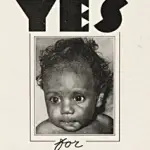
The 1967 referendum was an important advance for the indigenous people of Australia. These tribal people had inhabited the Australian landscape for more than 40,000 years before the arrival of European settlers. During this time indigenous Australians developed their own customs, culture and spiritual connections with the land and its creatures. The arrival of Europeans saw many indigenous tribes forcibly relocated from their land, while others succumbed to diseases introduced by European settlers. Indigenous Australians were afforded no legal status or protection during the colonial period. The Commonwealth Constitution (1901) contained just two explicit references to Australia’s indigenous people. One of these, in Section 127, stated that indigenous people should not be included in counts of the population of Australia. In effect, this relegated their status to that of flora or fauna. The other reference to indigenous Australians was found in Section 51(xxvi):
The Parliament shall, subject to this Constitution, have power to make laws for the peace, order, and good government of the Commonwealth with respect to … the people of any race, other than the aboriginal people in any State, for whom it is necessary to make special laws.
This clause was sometimes called the ‘race power’ because it empowered the States – not the Commonwealth – to make laws pertaining to indigenous people. Because of this, States had long been responsible for, or ‘in charge of’, indigenous affairs. The States passed laws pertaining to indigenous people and some of these laws were discriminatory. In Queensland, for instance, Aboriginal people could not marry without seeking permission from the government. Most States had departments that developed policies and regulations affecting indigenous people, such as New South Wales’ Department of Aboriginal Affairs. The States also had a Protector or Chief Protector of Aborigines, who was nominally responsible for the welfare of indigenous people in remote areas. The notorious A. O. Neville, shown in the movie Rabbit Proof Fence, was Chief Protector for Western Australia between 1915 and 1936, allegedly overseeing policies of assimilation and child removal.
There had been attempts to alter aboriginal status in the Constitution as far back as the 1920s, with church and women’s groups calling on the Commonwealth to assume responsibility. By the 1950s a small but hard-working and outspoken group of Aboriginal activists – led by Faith Bandler, Jessie Street, Pearl Gibbs and others – formed the Federal Council for the Advancement of Aboriginal and Torres Strait Islanders (FCAATSI). In 1957 they tabled a petition in the parliament, however the government was unmoved and refused to support the idea of a referendum. In 1962 the FCAATSI began a national petition, not only collecting names and support but also educating Australians about various discriminations in State laws. In 1963, with more 100,000 names on paper, FCAATSI bombarded the Commonwealth parliament with petition papers, tabling them on a daily basis. In 1964 Arthur Calwell, leader of the Opposition Labor Party, tabled a private member’s bill proposing the alteration of the Constitution – but the government refused to support it.
The retirement of prime minister Robert Menzies, growing public support and a changing political climate led the government to change its mind in 1967. A constitutional amendment bill was drafted and passed through parliament; a referendum was organised and campaigning began. FCAATSI activists urged electors to vote ‘YES’ to the proposed changes, suggesting it would enhance the rights and recognition of indigenous peoples. The proposals received widespread support: from the Federal government and opposition, from almost all State political parties, from churches and social groups, and from most of the media. Few were surprised when the changes were accepted with a total majority exceeding 90 percent:
| State | Enrolled | YES votes | YES % | NO votes | NO % | Informal |
|---|---|---|---|---|---|---|
| NSW | 2,315,828 | 1,949,036 | 91.46 | 182,010 | 8.54 | 35,461 |
| Victoria | 1,734,476 | 1,525,026 | 94.68 | 85,611 | 5.32 | 19,957 |
| Queensland | 904,808 | 748,612 | 89.21 | 90,587 | 10.79 | 9,529 |
| South Australia | 590,275 | 473,440 | 86.26 | 75,383 | 13.74 | 12,021 |
| Western Australia | 437,609 | 319,823 | 80.95 | 75,282 | 19.05 | 10,561 |
| Tasmania | 199,589 | 167,176 | 90.21 | 18,134 | 9.79 | 3,935 |
| TOTAL | 6,182,585 | 5,183,113 | 90.77 | 527,007 | 9.23 | 91,464 |
In reality the 1967 referendum victory had little immediate impact for indigenous people. It did not give them the right to vote; that had been guaranteed by Commonwealth legislation in 1962. It did not grant them citizenship or equal rights. It did not invalidate offensive laws (in fact most discriminatory State laws had been removed by the time the referendum took place). The striking out of Section 127 and the inclusion of Aboriginal people in the census was largely a symbolic change. However the alteration of Section 51(xxvi) meant the Commonwealth government rather, than the six States, now had legislative authority with regard to the indigenous population. Several reforms would eventually flow from this new Commonwealth power, including the move towards native land rights in the 1970s; the establishment of tribal land reserves; education, health and housing schemes; and, in 1990, the formation of a self-governing Aboriginal body (the Australian and Torres Strait Islander Commission, or ATSIC).
© lawgovpol.com 2014. Content on this page may not be republished or distributed without permission. For more information please refer to our Terms of Use.
